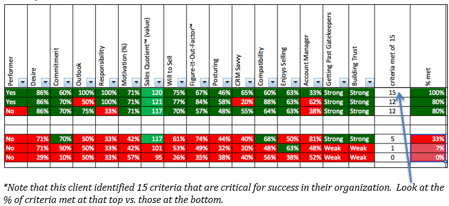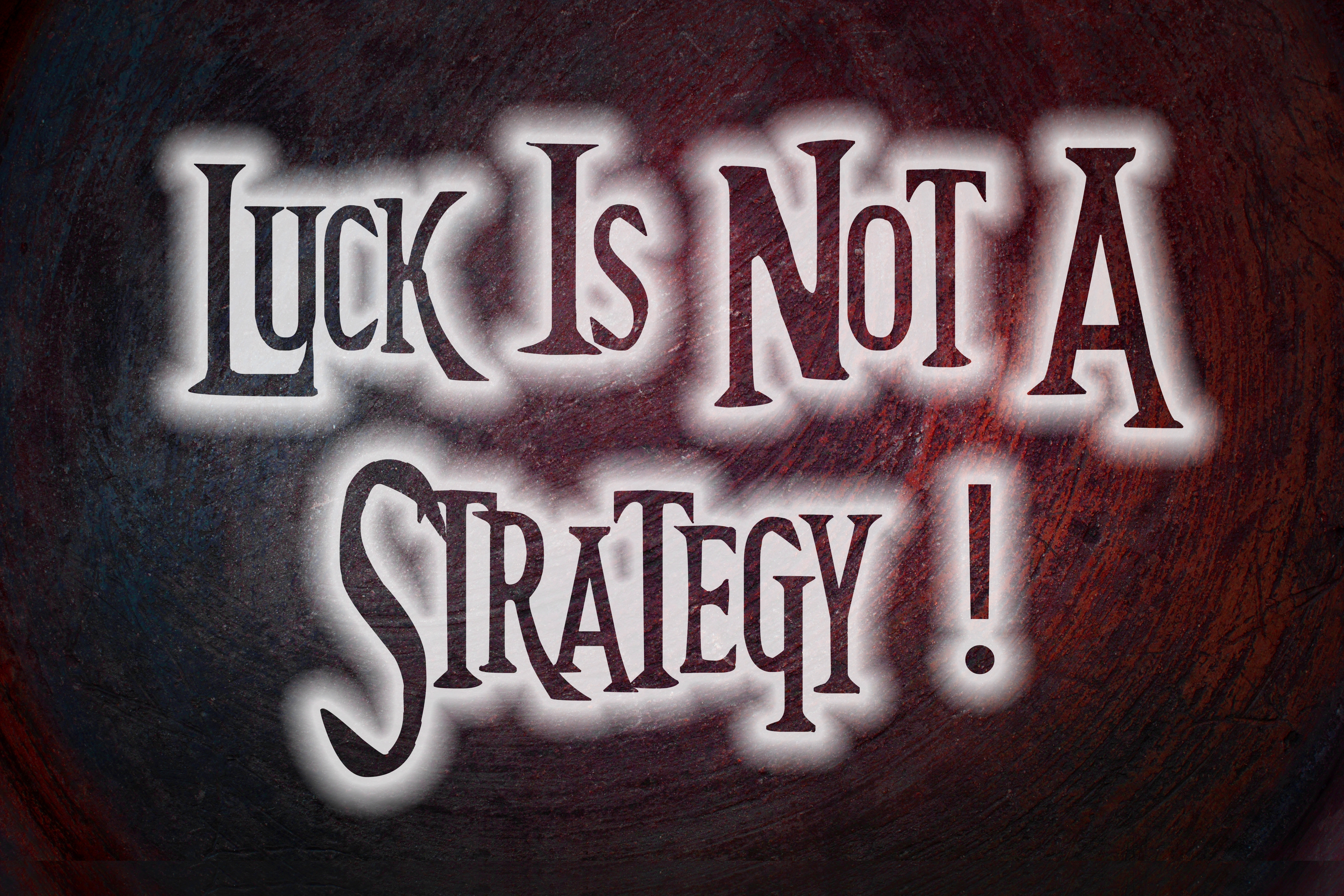THE DIGITAL AGE SIGNALS AN END TO TRADITIONAL SELLING
If you’re not worried about losing your job as a salesperson, an investment advisor, an insurance broker or a banker, think again. It’s already happening and it will continue to happen.
This is not a bold statement coming from someone trying to create hysteria to create more business for his own business solutions practice (Anthony Cole Training Group). Think of this as someone who is reporting today’s weather and attempting to tell you that the current weather patterns are predicting with some certainty that tomorrow will be cloudy with a 50% chance of severe thunderstorms with hail and rain coming down like cats and dogs.
(Click HERE for the MUST watch prediction of the future of salespeople…)
THE LIMITATIONS OF COMPUTER INTELLIGENCE?
Dan Sullivan, co-founder of Strategic Coach and author of The 21st Century Agent, attempted to warn salespeople (agents) about what they needed to do to secure their future. These three keys to professional security were based on the known capabilities of the microchip in 1995. At the time, Dan stated that the microchip was incapable of:
- Finding and creating new relationships
- Providing creative solutions
- Helping people make the decision to buy
But, how accurate are those comments today? Not very! Mobile technology, big data, sophisticated algorthyms and search protocols allow for anyone selling anything to:
- Reach out, find and attract potential buyers
- Digitally collect the appropriate data and apply that data to provide solutions for the buyer based on the purchase preferences of the buyer (For instance, I now buy most of my shoes on Zappos.)
- Provide a “1 click option” (like at Amazon) for people to purchase nearly anything in less than a minute
“So…” you reply, “this technology only applies to shoes, books and low cost items.”
Not so fast. Think about the last time, either at home or while in your car, seeing or hearing Flo from Progressive or the reptile from Geico telling you that you could get insurance from them cheaper and faster. What about State Farm and Liberty Mutual who also consistently tell you that, not only can you get better coverage, but they will also pay your claims quicker and reward you for safe driving?
The technology and AI of today has replaced sales jobs – make no mistake about it!
HOW AI CHANGES THE GAME
You think that your type of selling is really that sophisticated? Alec Ross recently spoke at the Bank Insurance And Securities Association (BISA) meeting at the beautiful Diplomat Resort and Hotel in Hollywood, Florida. He provided a harsh look at reality to all of the advisors in the room when he candidly answered the following question:
“Alec, what is the one question that this audience (Presidents, program managers, advisors, sales managers, VPs of sales, Investment Product Companies and Broker Dealers) should be obsessing about?”
Alec: You should be obsessing over ‘disintermediation’. You should be worried about the question – Will the future need financial advisors to help people with their financial independence and retirement planning? Given the state of artificial intelligence and the speed at which data – big data – is becoming available, you should be worried about the role you currently have. You should be worried about being replaced by artificial intelligence (AI) that is so sophisticated that it functions as well, if not better than, any human advisor would and it does so at a lower cost and a higher level of productivity and effectiveness.
I have Alec’s book and am reading the first chapter about robots. Quite clearly, he states that if your job is defined by
- Collecting data and…
- Applying that data to known information in a data base and then…
- Providing information back to your prospect…
Then you CAN BE REPLACED by the microchip (artificial intelligence) that…
- Doesn’t need a vacation
- Won’t require medical leave
- Won’t need health insurance or a 401(k)
- Will work 24/7/365
- Will never complain about management, competition or compensation
All companies will need to do is keep the machine in a cool room with fresh air, update the components every 18 months at a fraction of the cost 18 months earlier and you are set to go.
THE CAR BUYING EXPERIENCE
My current Ford explorer has just less than 100,000 miles on it. I received a notice on my notification band (a wrist accessory that used be called a watch) that 1) it was time for a trade-in to maximize the value of the trade-in and 2) the market conditions were going to be perfect over the next 30 days. The market was going to be perfect because of these 3 factors:
- The anticipation of a new trade agreement was going to provide tax incentives to manufacture more power alternative vehicles domestically
- The previous year models were going to be discounted or would have to be shipped overseas – the discount was a better economic alternative for the auto makers
- There would be a reduction in price due to the redistribution of labor cost
I’ve always dreaded the buying process when it came to buying a new car. It’s not that I don’t like getting a new car; my family can tell you how excited I get as my vehicles close in on the 100k range. I start thinking about and ogling cars for at least 6 months in advance.
My good friend, JB, just bought the latest Lexus SUV… and I’m jealous. JB is a habitual car buyer and an easy mark. He takes his car in for service, they lend him a new one to drive around, he does his errands, gets seduced by the latest technology, fuel efficiency, et cetera… and, the next thing you know, he’s taking his golf clubs out of the old SUV (only 2 years “old”) and putting them in the new one.
AN EXCEPTIONAL EXPERIENCE - BUYING FROM BILL
Every time I search for anything on my laptop, my mobile connection device (MCD or notification band; no longer just a watch, phone or fitness monitor) begins popping up with small ads to notify me about the closet auto distribution center and the “best” deals in a 20-mile radius. Honestly, I’ve never been one to shop for the best deals. I’ve purchased cars from Bill for several years now and Bill is the one I will buy from again.
It’s Saturday. I just finished my workout and then headed over to see Bill… but Bill wasn’t there. As a matter of fact, it was hard to find anyone there. The service bays were open so I walked over there and asked to talk to someone about buying a car - specifically, I was looking for Bill. Joe, the service manager, told me to head over to the main entrance and I would find “Bill” inside.
I did as I was instructed.
I walked through the sliding glass doors and in front of me were a series of kiosks - very similar in appearance to what you might see in airports or grocery stores. They all had names on them and one of them was named “Bill”. I walk over to Bill and looked at the screen, which welcomed me to the King’s Auto Distribution Center. As I moved closer, Bill, the kiosk, began speaking to me:

- “Hello, Tony, welcome back! It is great to see you again.” (I'm amazed that it even sounds like my old friend, Bill). Bill continues, “How have you been?”
- I stood there, not saying anything. Eventually, Bill asked, “Tony, are you here to talk about buying another car? I got a notice that your Ford was closing in on 100k miles and I know from your history with us that you like to maximize your trade-in value and buy at just the right time in the market. How can I help you?”
- The screen instructs me that it’s okay to talk to Bill and that I should put on the headset and talk to Bill.
- “Bill,” I say with some hesitance, “I'm here to look at some cars, SUV’s specifically. You’re right; I have 97,000 miles on my car, it’s got new tires and up-to-date maintenance. I’ve been look at some other SUVs. I still like Ford, but would like to see last year’s Lexus XL26.”
- “Excellent, Tony. I'm glad you’ve come back here to let us help you with your transportation choices. The Lexus xl26 also comes in the Lexus xlndr (NDR – No Driver Required) model. May I ask you a couple of questions?”

Bill continued to ask me questions about my driving habits, preferences and skills. He was very cordial and non-offensive with the delicate questions especially the ones about my ability to navigate now that I’m a bit older. He knew that I’ve had a few vision problems for some time now and wanted to know how that impacts my driving in poor conditions like evening, rain, fog or snow. He wanted to know if I always drive alone or if I have someone with me like my wife, Linda, my golfing friends or perhaps grandchildren. He wanted to know how concerned I am about my own safety and the safety of others. He wanted know if I'm planning on any long trips and if a sudden rise in traditional fuel prices would have a negative impact on my budget.
Once we got through this discussion, Bill informed me about the cars that match my profile that were available now or in the next 7 days. If I wanted to test drive a couple of the vehicles, then all he needed me to do was confirm my driver’s license number on file and to select a payment option as a security deposit. I could now test drive each car for up to 12 hours with a limit of 3 cars over 5 days or 5 cars over 7.
I selected 3 cars over 5 days and I received a receipt telling me which parking spaces have the cars I’m interested in and codes had been sent to my MCD so that I can start the cars I choose to test.
Bill wanted to know if I had any other questions. He sent me a notification that provided me with information on how to contact him while I’m on the road. I can contact him directly from any vehicle or my MCD. He thanked me for coming to Kings Auto Distribution Center, told me to give my family his best regards and said that he looked forward to talking to me again soon. He hopes that I find a car to my liking.
BUYING NO LONGER REQUIRES FACE-TO-FACE
No, this really didn’t happen, but as I prepared for writing this article, I spent a lot of time playing the “what if” game. Given that today you can actually do a lot of car shopping online AND dealerships already have kiosks that have taken over various duties, it isn’t a far stretch to think that the auto industry will soon have a sales model that won’t need “a salesman on the lot”.
Several years ago, my wife and I bought a houseboat at Lake Cumberland, Kentucky. We went to the lake, visited several marinas and looked at a dozen boats or more before settling on “Light’n Up”. What I didn’t have to do is speak to someone about financing. I had already been approved for the boat loan… without even talking to anyone. That was 12 years ago.
It’s just a matter of time before someone can get a $1,000,000-dollar loan that way!
HOW TO SECURE YOUR FUTURE IN SELLING
I know this article might seem harsh, but the situation is not hopeless. In summary, here are the things you can do to secure your future in selling. Be good, and I mean really good, at the items on this list:
- Passion and commitment to success in selling
- Taking ownership of outcomes
- Finding high value, sophisticated opportunities in the marketplace
- Deciding that you will only work with people that have a need and understand the value of what you bring to the table
- Being masterful at a Discovery and Stewardship based sales approach.
- Being able to recover from rejection anytime during the process
- Being able to connect with people via social selling modalities and not be afraid of providing information to help people in their decision-making process.
- Following a specific sales process and executing it flawlessly
- Demonstrating that you are a great investment for a company because you know how to express their value proposition. You represent the company to their target market(s) and you drive revenue growth.
- Being a self-starter
- Having a great figure-it-out factor
- Taking risk, failing, learning, growing
- “Owning the room” when you present solutions
This list represents about ½ of the characteristics and skills demonstrated by elite salespeople as identified by the research done by Objective Management Group. Keep in mind that the top performers today are the ones who will have sales jobs in the future.
Additional resources:
Alec Ross' Book – Industries of the Future
Assessing Your Top Talent – How well will your salespeople perform in the future world of selling?







